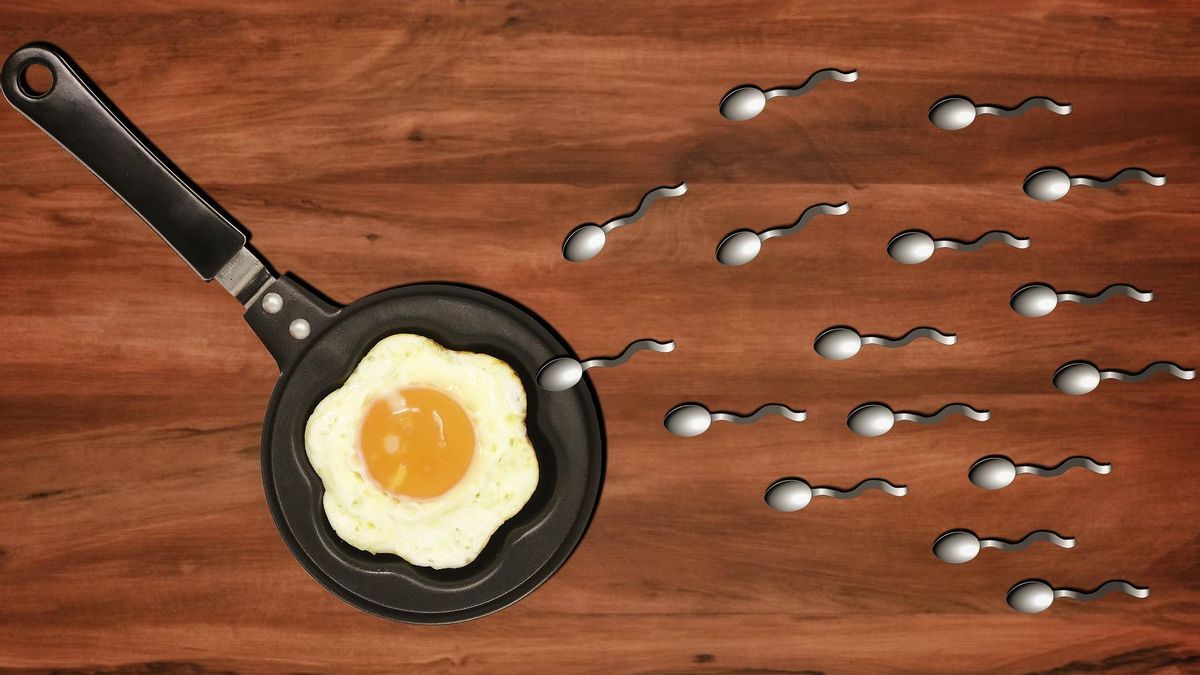JAKARTA - Scientists who are looking for the causes of decreased sperm count, are getting a clearer picture of the role that chemical pollutants play and they are not good.
A study of urine samples from nearly 100 male volunteers has found alarming levels of endocrine disruptors known to reduce human fertility.
Cocktail chemicals such as bisphenol and dioxin, which are believed to interfere with hormones and affect sperm quality, are present at levels up to 100 times what is considered safe.
Average exposure to this chemical is 17 times the level considered acceptable.
"Our assessment of the mixed risk of chemicals affecting men's reproductive health revealed a worrying overestimation of the acceptable combined exposures," wrote the authors of the study, published in the journal 'Environment International', publishes Euronews June 14.
The study measured nine chemicals, including bisphenols, phthalates and paracetamol, in urine samples from 98 Danish men aged 18 to 30 years.
In addition, it uses available data, mostly from the European Food Standards Agency (EFSA), to estimate their possible exposure to 20 other chemicals.

The team then compared the results with acceptable exposure levels derived from the scientific literature.
This yields a measure of the potential impact of each chemical that the scientists combine, to produce a measure of overall risk, or 'hazard index' for a mixture of compounds.
The study authors, led by Professor Andreas Kortenkamp from Brunel University London, said they were 'surprised' by the magnitude of this hazard index in the volunteers studied.
They were also surprised to find bisphenol A (BPA) was the dominant risk factor, given recent research focused on phthalates, which are used in plastics.
BPA is followed by dioxins, paracetamol and phthalates. Removing BPA from the mix did not decrease combined exposure to acceptable levels, and paracetamol was described as a 'mixed risk driver among subjects taking the drug'.
The researchers acknowledge some limitations of their study. For example, data were used from 2009 to 2010, and exposure to BPA may have decreased since then, while exposure to other chemicals may have increased.
Another uncertainty is whether women of reproductive age had the same level of exposure to the chemical as men in the study.
However, the researchers stress their study may actually underestimate the risk posed by exposure to this chemical cocktail, given the 'many chemicals that humans are exposed to', not all of which were measured in this study.
It is known that sperm quantity and quality have declined dramatically in Western countries in recent decades, with studies showing sperm counts have fallen by more than half in 40 years.
Meanwhile, other reproductive health disorders are also increasing. Not only that, scientists around the world have considered various other possible causes behind the decline in sperm count, including lifestyle factors, tobacco consumption and air pollution.
However, recent research is increasingly focusing on the role that chemicals play.
"Our analysis has a predictive character that can be verified in an epidemiological study designed according to semen quality," write Kortenkamp and colleagues.
While awaiting further studies in the population, the researchers are calling for urgent regulatory action such as banning BPA from food contact materials as a precautionary measure.
The English, Chinese, Japanese, Arabic, and French versions are automatically generated by the AI. So there may still be inaccuracies in translating, please always see Indonesian as our main language. (system supported by DigitalSiber.id)













